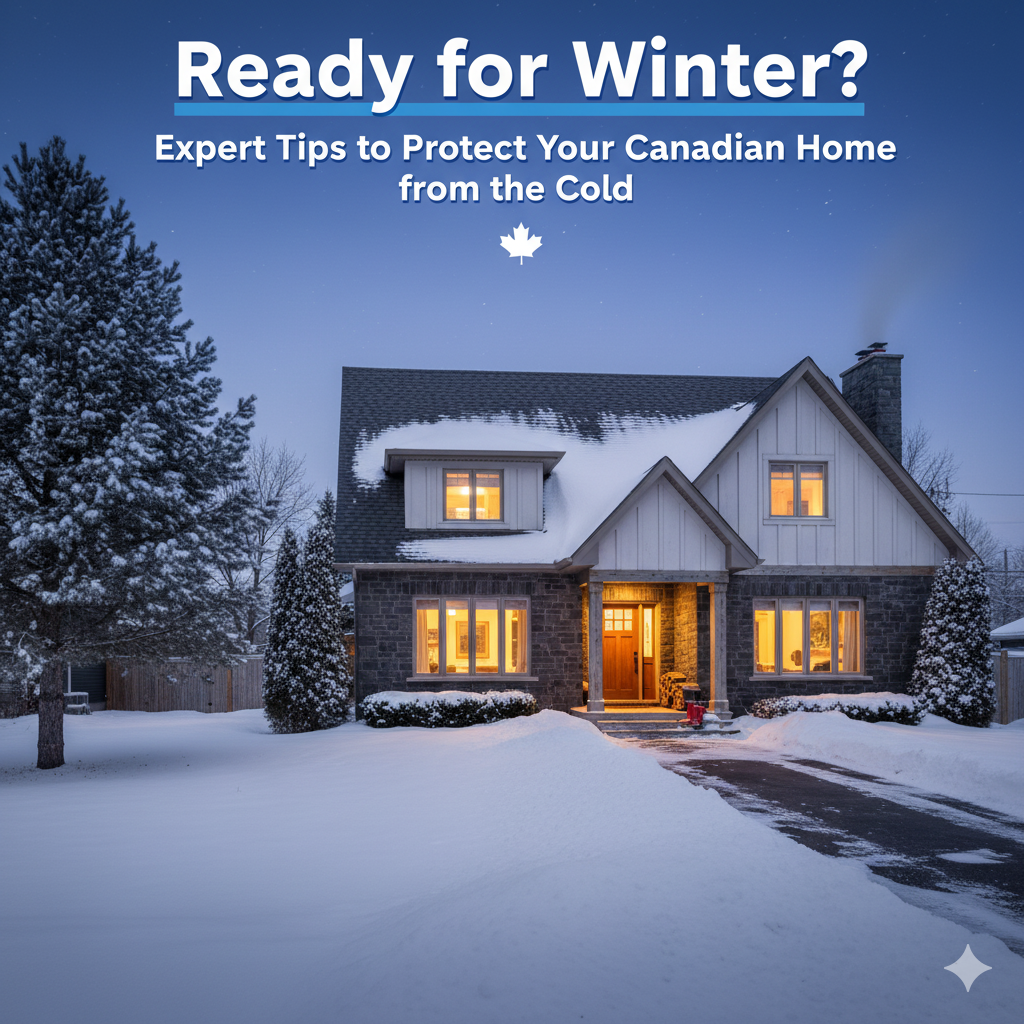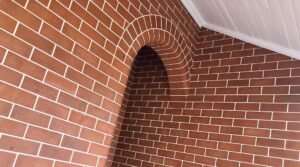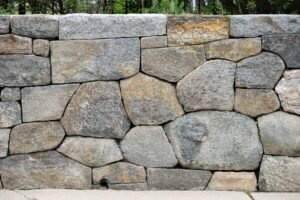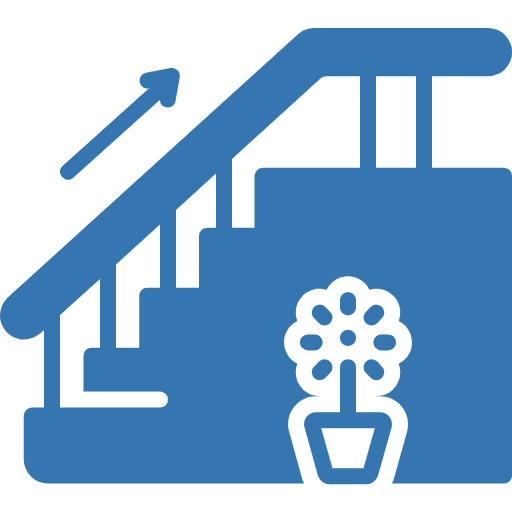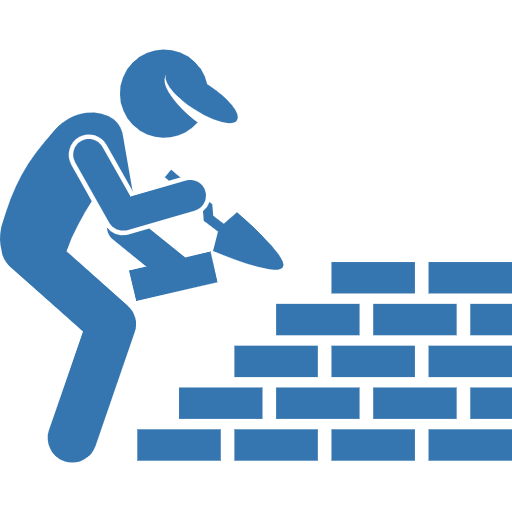When winter arrives in Canada, the temperature drops, snow starts falling, and homes face many challenges. Preparing your home before the cold weather begins is one of the best ways to stay safe, warm, and comfortable. It also helps you save money by avoiding costly repairs.
At TheFixitGuys, we understand how harsh Canadian winters can be. Our team of experts has prepared this simple and complete guide to help you make your home ready for the cold season. Follow these easy tips to protect your home both inside and outside.
Table of Contents
Toggle1. Inspect and Maintain Your Heating System
Your heating system is what keeps your home warm all winter. If it stops working suddenly, it can be uncomfortable and even unsafe. That’s why checking it early is very important.
-
Check and replace air filters:
Dust and dirt make your heating system work harder, which uses more energy and raises your bills. Clean or replace filters every month to help your heating system run smoothly and keep indoor air clean.
-
Test carbon monoxide detectors:
Carbon monoxide is a deadly gas that has no smell or color. Test your detectors every month, replace batteries, and make sure they are installed in every level of your home for safety.
2. Weatherproof Your Home
When cold air comes inside, your heater has to work more, which wastes energy. Weatherproofing helps keep the warm air in and cold air out.
-
Seal windows and doors:
Small gaps allow cold air to enter and warm air to escape. Use weatherstripping or caulking to close those gaps and make your home more energy efficient.
-
Insulate pipes:
Pipes in cold areas can freeze and burst. Wrap them with foam or insulation sleeves, especially in the basement, attic, or garage, to stop them from freezing.
-
Install storm windows:
Storm windows give an extra layer of protection against cold winds and heat loss. They help reduce energy bills and make your home feel warmer.
3. Take Fire Safety Precautions
During winter, we use heaters and fireplaces more often, so fire safety becomes very important. A few safety checks can save lives and prevent property damage.
-
Check smoke alarms:
Test smoke alarms every month and replace batteries twice a year. Make sure there’s one alarm on every floor of your home, especially near bedrooms.
-
Maintain your fireplace:
If you use a wood fireplace, clean the chimney to remove soot buildup that can catch fire. If you have a gas fireplace, have a professional inspect it for leaks or blockages.
-
Use space heaters safely:
Keep heaters at least three feet away from anything that can burn, such as curtains or furniture. Turn them off before sleeping or leaving the room.
4. Protect Your Plumbing
Frozen pipes can burst and cause serious water damage. A few preventive steps can save you a lot of money and stress.
-
Know your main water shut-off valve:
In case a pipe bursts, turning off the main valve quickly stops flooding. Make sure everyone in the house knows where it is located.
-
Drain outdoor faucets:
Disconnect garden hoses, drain them, and cover outdoor taps with insulation covers. This prevents water from freezing inside the pipes.
-
Keep a slow drip on cold nights:
Letting water drip slightly keeps it moving, which stops pipes from freezing. This small step can prevent big repair costs later.
5. Prepare Your Home’s Exterior
The outside of your home faces snow, ice, and freezing rain. Regular maintenance keeps your property safe from damage.
-
Clean gutters:
Remove all leaves and dirt so melting snow can drain easily. Blocked gutters can freeze and cause leaks in walls and roofs
-
Check your roof:
Repair damaged shingles or cracks before winter starts. A strong roof keeps your house dry and safe from snow buildup.
-
Seal and paint surfaces:
Apply waterproof sealant to wooden decks and use anti-rust paint on metal parts. This helps prevent snow and rain damage.
-
Store garden hoses:
Drain hoses completely and store them indoors to prevent freezing and cracking.
-
Fix walkways and driveways:
Repair cracks and uneven areas to avoid slippery surfaces during snow and ice.
-
Trim tree branches:
Cut weak or overhanging branches that could break and fall during storms or heavy snow.
6. Prepare Your Home’s Interior
Your home’s inside needs care too before the temperature drops. A few simple tasks can make a big difference.
-
Inspect attic and basement:
Check for air leaks or gaps where heat can escape. Add insulation in these areas to keep your home warm and save energy
-
Service your furnace or boiler:
Contact any expert for a full heating system inspection to ensure your system runs safely and efficiently all winter.
-
Clean fireplace and chimney:
Remove ashes and buildup regularly. This keeps air clean and reduces fire risks.
-
Install a smart thermostat:
It helps control temperature automatically and saves money by reducing energy waste.
-
Replace smoke detector batteries:
Always test and replace batteries before winter to make sure they work properly when needed.
7. Prepare for Snow and Ice
Snow can look beautiful but can also be dangerous if not managed properly. Regular maintenance keeps your home safe and prevents damage.
-
Inspect your roof:
Look for broken or missing shingles before winter. Cleaning your roof and fixing small cracks now helps prevent ice buildup and leaks later.
-
Clean gutters and install extensions:
Remove leaves and debris from gutters so water flows easily. Add downspout extensions to direct water away from your home’s foundation.
-
Clear walkways and driveways:
Shovel snow early and use salt or sand to prevent slips and falls. Keeping paths clear also makes it easier to enter or exit safely.
8. Prepare for Shorter Days and Darker Nights
Winter days are shorter, and nights are longer. Proper lighting keeps your home safe and bright.
-
Install or fix outdoor lights:
Make sure all outdoor lights work properly. Use LED bulbs that save energy and motion-sensor lights that turn on automatically when needed.
-
Wear visible clothes at night:
When walking outside after dark, wear bright or reflective clothes so cars and people can easily see you.
-
Add reflective markers:
Place reflective sticks or poles near your driveway and paths. They help you see better and find your way when snow covers everything.
9. Practice Emergency Preparedness
Canadian winters can bring power cuts and heavy snowstorms. Being ready helps you stay safe even during unexpected situations.
-
Check weather forecasts daily:
Watch or listen to weather news so you can prepare before a snowstorm or deep freeze hits your area.
-
Make a winter emergency kit:
Keep flashlights, extra batteries, blankets, food, water, and a small radio. It helps during long power cuts or if you can’t leave your home.
-
Have a family safety plan:
Talk with your family about what to do in an emergency. Choose a meeting place and emergency contact numbers.
10. Review Your Home Insurance Policy
Your home insurance helps you recover after damage from winter weather. It’s smart to review it before the cold season starts.
-
Read your insurance policy carefully:
Check what is covered, such as roof leaks, frozen pipes, or flooding. If you’re unsure, call your insurance agent to explain the details.
-
Add extra protection if needed:
In areas with heavy snow or flooding, ask about adding coverage for water or ice damage to avoid future loss.
-
Know your coverage limits:
Make sure your policy gives enough financial protection for your home and belongings in case of winter damage.
11. Keep a Healthy Lifestyle During Winter
Staying healthy helps you enjoy the winter season and keep your energy high.
-
Eat nutritious foods:
Add fruits, vegetables, soups, and warm meals to your diet. These help your body fight cold and stay strong.
-
Drink enough water:
Many people forget to drink water in winter. Staying hydrated keeps your body healthy and skin soft.
-
Sleep well and stay active:
Proper rest and light exercise like walking indoors help keep your body fit and your mood positive during the cold months.
12. Tips for International Students in Canada
If you’re new to Canada, winter can feel very cold and different. But with a few simple habits, you can adjust easily.
-
Check weather updates:
Always check the daily forecast before going out. Cities like Toronto and Montreal get colder than Vancouver, so be prepared.
-
Dress in layers:
Wear warm jackets, gloves, and waterproof boots. Dressing in layers helps you stay comfortable both indoors and outdoors.
-
Keep your home warm:
Seal windows, fix small cracks, and use a humidifier to make your room cozy and fresh.
-
Enjoy winter activities:
Try snow sports like skating or skiing, or just enjoy the snow. Winter can be fun if you’re ready for it.
Key Takeaways
- Check your home inside and outside before winter.
- Maintain heating systems, pipes, roofs, and gutters.
- Prepare for power cuts and snow with an emergency kit.
- Stay healthy, warm, and safe through good preparation.

